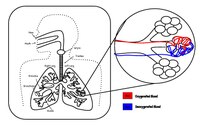
Photo from wikipedia
Abstract Josef Stefan developed the theoretical framework needed to analyze the diffusion column in the second half of the 19th century. For the next six decades after his death, his… Click to show full abstract
Abstract Josef Stefan developed the theoretical framework needed to analyze the diffusion column in the second half of the 19th century. For the next six decades after his death, his design allowed the estimation of binary gas diffusivities assuming a flat liquid–gas interface and isothermal operation at atmospheric pressure. In the 1950s, inaccuracies in the diffusivity estimates were detected. These were related to column end effects at the top, where turbulence and eddy formation at the mixing point of the sweep and gas phases occurred, and at the liquid–gas interface, where curvature due to surface tension changed the mass transfer area and the diffusion path length for gas A to the top. The present work examines quantitatively for the first time the relationship between interfacial curvature resulting from surface tension and the binary gas diffusivity estimates in the Stefan column. The hypothesis is that such a relationship exists. The dimensionless parameter N 1, which gives the ratio of surface tension to gravitational forces acting on the interface, determines the radial distribution profile, in turn affecting the curved-to-flat-interface binary gas diffusivity ratio. The generalized surface tension model was validated numerically with interfacial descent versus time data from two Stefan column runs reported recently (acetone-air and n-hexane-air). The experimental curved-to-flat-interface diffusivity ratio in both runs was 1.7–1.8, indicating an important contribution from interfacial curvature in the diffusivity calculations. The researcher now has a quantitative tool relating interfacial curvature due to surface tension and the binary gas diffusivity estimates obtained in the Stefan column.
Journal Title: Chemical Engineering Communications
Year Published: 2023
Link to full text (if available)
Share on Social Media: Sign Up to like & get
recommendations!